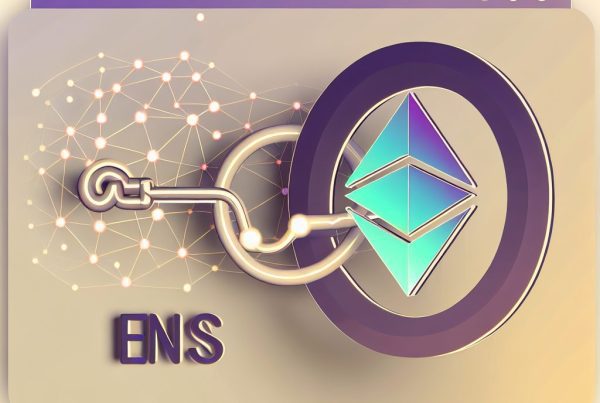How to Stake Tokens on Ethereum
Staking tokens on Ethereum has become a popular way for cryptocurrency enthusiasts to earn passive income while contributing to the network’s security and efficiency. With the transition to Ethereum 2.0 and the implementation of Proof of Stake (PoS), staking has evolved into a more accessible and rewarding process. This comprehensive guide will walk you through the essentials of staking tokens on Ethereum, including the benefits, the staking process, and tips for maximizing your rewards.
Understanding Ethereum and Staking
Ethereum is a decentralized blockchain platform that enables developers to build and deploy smart contracts and decentralized applications (dApps). The network originally operated on a Proof of Work (PoW) consensus mechanism, which required miners to solve complex mathematical problems to validate transactions. However, with the launch of Ethereum 2.0, the network has transitioned to a Proof of Stake (PoS) model, allowing users to stake their ETH to secure the network.
Staking involves locking up a certain amount of cryptocurrency to support the operations of a blockchain network. In return, stakers earn rewards, typically in the form of additional tokens. This process not only helps secure the network but also allows participants to earn passive income.
Benefits of Staking on Ethereum
Staking on Ethereum offers several advantages:
- Passive Income: By staking your ETH, you can earn rewards without actively trading or managing your assets.
- Network Security: Staking helps secure the Ethereum network, making it more resilient against attacks.
- Lower Energy Consumption: PoS is more energy-efficient than PoW, contributing to a more sustainable blockchain ecosystem.
- Community Participation: Staking allows you to participate in the governance of the Ethereum network, influencing decisions that affect the ecosystem.
How to Stake Tokens on Ethereum
Staking on Ethereum can be done in several ways, depending on your preferences and technical expertise. Here’s a step-by-step guide to help you get started:
1. Choose Your Staking Method
There are primarily two methods for staking ETH:

- Solo Staking: This method requires you to run your own validator node. You need to stake a minimum of 32 ETH to participate directly in the network’s consensus process.
- Pooled Staking: If you don’t have 32 ETH or prefer not to run a node, you can join a staking pool. This allows you to combine your ETH with other users, increasing your chances of earning rewards.
2. Set Up a Wallet
To stake ETH, you need a compatible wallet. Here are some popular options:
- MetaMask: A widely used browser extension wallet that supports Ethereum and ERC-20 tokens.
- Ledger: A hardware wallet that provides enhanced security for your assets.
- Coinbase Wallet: A user-friendly option for beginners that allows for easy staking.
Ensure that your wallet is secure and that you have backed up your recovery phrase.
3. Acquire ETH
If you don’t already own ETH, you’ll need to purchase some from a cryptocurrency exchange. Popular exchanges include:
Once you have acquired ETH, transfer it to your wallet.
4. Choose a Staking Pool (if applicable)
If you opt for pooled staking, research and select a reputable staking pool. Consider factors such as:
- Fees: Different pools charge varying fees, which can affect your overall returns.
- Reputation: Look for pools with positive reviews and a track record of reliability.
- Minimum Stake: Ensure the pool’s minimum staking requirement aligns with your investment.
5. Start Staking
Once you have chosen your staking method and set up your wallet, you can begin staking:
- For Solo Staking: Download the Ethereum 2.0 client (such as Prysm or Lighthouse) and follow the instructions to set up your validator node. You will need to deposit 32 ETH into the Ethereum 2.0 deposit contract.
- For Pooled Staking: Follow the instructions provided by your chosen staking pool. This usually involves connecting your wallet and depositing your ETH into the pool.
6. Monitor Your Staking Rewards
After staking, you can monitor your rewards through your wallet or the staking pool’s dashboard. Rewards are typically distributed regularly, and you can track your earnings over time.
Maximizing Your Staking Rewards
To enhance your staking experience and maximize your rewards, consider the following tips:
- Stay Informed: Keep up with Ethereum updates and changes in staking protocols to ensure you are making the best decisions.
- Choose the Right Pool: If using a staking pool, select one with a good reputation and low fees.
- Reinvest Rewards: Consider reinvesting your staking rewards to compound your earnings over time.
- Secure Your Wallet: Use hardware wallets or secure software wallets to protect your staked ETH from hacks.
Risks of Staking on Ethereum
While staking can be rewarding, it also comes with risks that you should be aware of:
- Market Volatility: The value of ETH can fluctuate significantly, impacting the overall value of your staked assets.
- Slashing Risks: If you run a validator node and fail to perform your duties correctly, you may face slashing penalties, resulting in a loss of staked ETH.
- Liquidity Issues: Staked ETH may be locked up for a period, limiting your ability to access your funds quickly.
Frequently Asked Questions (FAQs)
What is the minimum amount of ETH required to stake?
The minimum amount required for solo staking is 32 ETH. However, if you choose to join a staking pool, you can stake smaller amounts.
How are staking rewards calculated?
Staking rewards are typically calculated based on the total amount of ETH staked and the network’s overall staking participation. The more ETH you stake, the higher your potential rewards.
Can I unstake my ETH at any time?
Currently, once you stake your ETH, it is locked until the Ethereum network allows withdrawals. This feature is expected to be implemented in future updates.
Is staking on Ethereum safe?
Staking on Ethereum is generally considered safe, especially when using reputable wallets and staking pools. However, it is essential to understand the risks involved and take necessary precautions.
Conclusion
Staking tokens on Ethereum presents an excellent opportunity for cryptocurrency enthusiasts to earn passive income while contributing to the network’s security. By understanding the staking process, choosing the right method, and being aware of the associated risks, you can make informed decisions that align with your investment goals. Whether you opt for solo staking or join a staking pool, the rewards can be significant.
For the latest news and updates in the cryptocurrency space, consider visiting Bitrabo. You can also follow me on social media for more insights: X, Instagram, and Threads.
Disclaimer: This article is for informational purposes only and should not be considered financial advice. Always do your research and consult with a financial advisor before making investment decisions.
The Crypto Watchlist of the Week 🔎
Subscribe to receive expert-curated projects with real potential—plus trends, risks, and insights that matter. Get handpicked crypto projects, deep analysis & market updates delivered to you.


